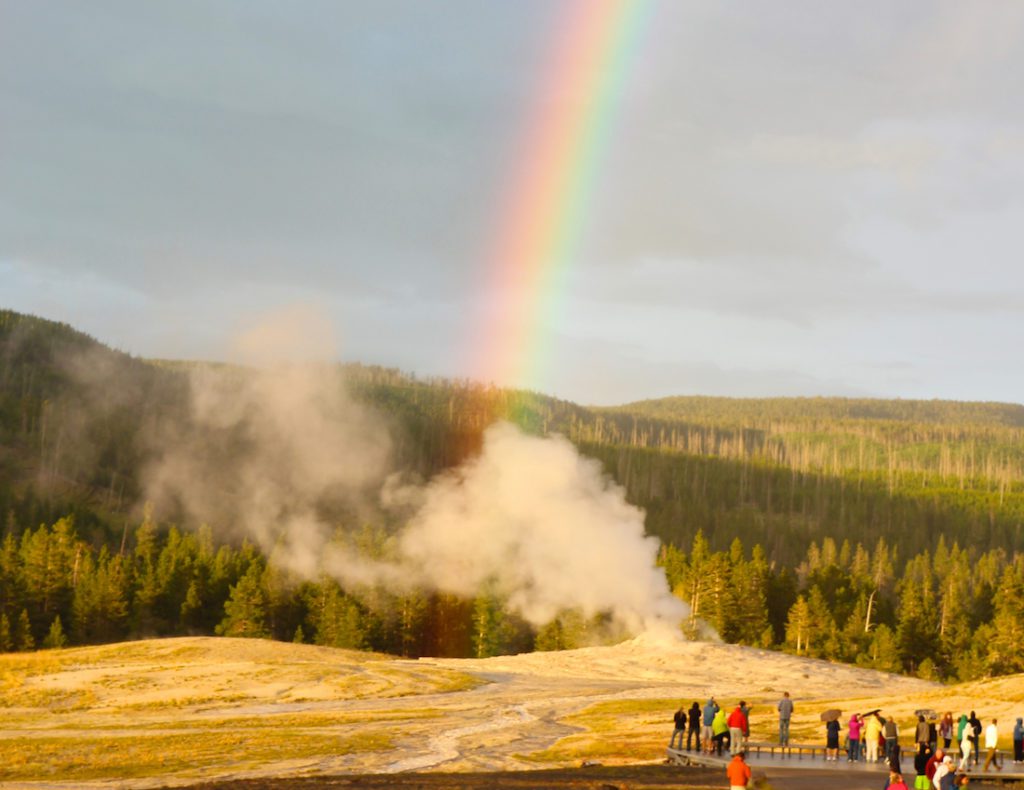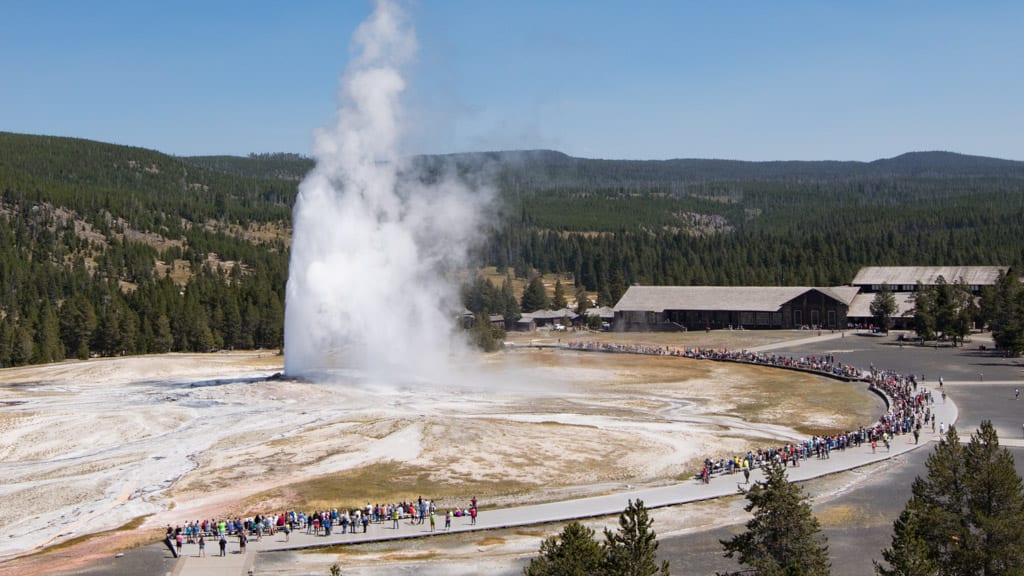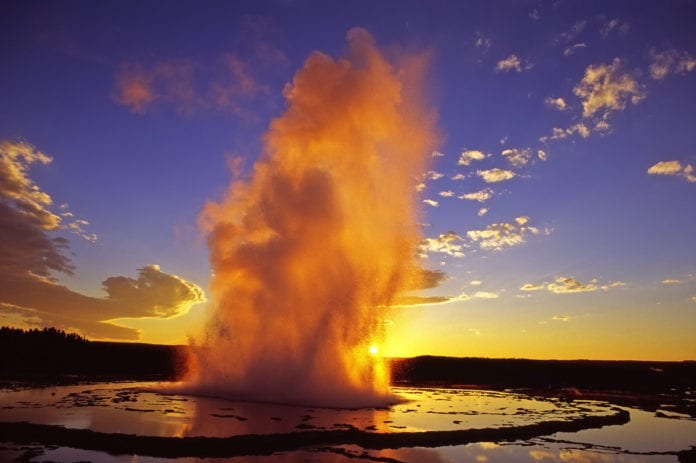Old Faithful is a famous cone geyser in Yellowstone National Park in Wyoming, United States. It erupts with such captivating punctuality that they named the whole gushing spring after it.
The phenomenal bursts of hot water and steam due to the geothermal activity of the Old Faithful, spurt up with such punctuality that they can even be predicted. But experts are saying that it may go silent, as it did 800 years ago.
How do geysers work?
For geysers to function, there must be heat, water, and a plumbing system. A magma chamber provides the heat, which radiates into the surrounding rock. Water from rain and snow works its way underground through fractures in the rock.
As the water reaches hot rocks it begins to rise back to the surface, passing through rhyolite, which is former volcanic ash or lava rich in silica. The hot water dissolves the silica and carries it upward to line rock crevices. This forms a constriction that holds in the mounting pressure, creating a geyser’s plumbing system. As superheated water nears the surface, its pressure drops, and the water flashes into steam as a geyser. Hot springs have unconstricted plumbing systems.

In the last several decades, after careful observations, scientists have gathered that Old Faithful’s intervals between eruptions (IBEs) have changed considerably, stretching from about 60–65 minutes in the 1950s to about 90–94 minutes since 2001. To determine the cause for such a change, the researchers from the US Geological Survey (USGS) collected several remnants of mineralised wood found around the mound upon which Old Faithful sits.
Today, the area around the Old Faithful is barren and empty of trees because the constant deluge and splatter of the scalding, alkaline-rich discharge would be incompatible with germination and seedling growth. But, decades ago, in a study, an ancient wood sample was analysed that suggested that there was a time when trees could grow because there were no geyser eruptions.
For the study, the researchers analysed 13 mineralised wood samples from the Old Faithful’s mound, with radiocarbon dating suggesting that these trees grew in Yellowstone around 1233 to 1362 CE.

“When I submitted the samples for radiocarbon dating I didn’t know whether they would be hundreds or thousands of years old,” first author and USGS geologist Shaul Hurwitz told. “It was an ‘aha!’ moment when they all clustered within a hundred-year period in the 13th and 14th centuries.”
To figure out how these trees were able to survive during that time, the researchers looked for historical data that could explain drought conditions at the time, where reduced precipitation and lower groundwater supply would turn off the taps for the iconic geyser. They didn’t have to look far, with previous local tree ring data indicating pronounced megadroughts across the region and in other parts of the world too, resulting from severe conditions during an episode known as the Medieval Climate Anomaly (aka Medieval Warm Period).
“It’s the time when we have things like grapes growing in Northern England and a loss of sea ice that allowed people to discover Greenland,” palaeoclimatologist Cathy Whitlock from Montana State University, who wasn’t involved in the study, explained. “We know in Yellowstone it was both warmer and drier. The upper tree line was higher up the slopes and there is evidence of more fires during that period.”


The team of researchers believe that with climate change making megadroughts more likely across the western United States, Old Faithful might erupt less frequently in the future and might even come to a stop.
“Climate models project increasingly severe droughts and large fires by mid-century leading to a major transformation of Yellowstone’s ecosystems,” the team writes. “Periods of decreased precipitation have been shown in modern observational records to result in less frequent eruptions of Old Faithful Geyser, while the new 14C dates of mineralised wood suggest that severe, long-duration drought events can lead to Old Faithful Geyser eruption cessation.”
Maxwell Rudolph, a geophysicist at the University of California, Davis, says that would be tragic for the millions of people who visit Old Faithful. “The extinction of this natural treasure would be a profound loss.”
The findings of the study are reported in Geophysical Research Letters.
Further Reading:


